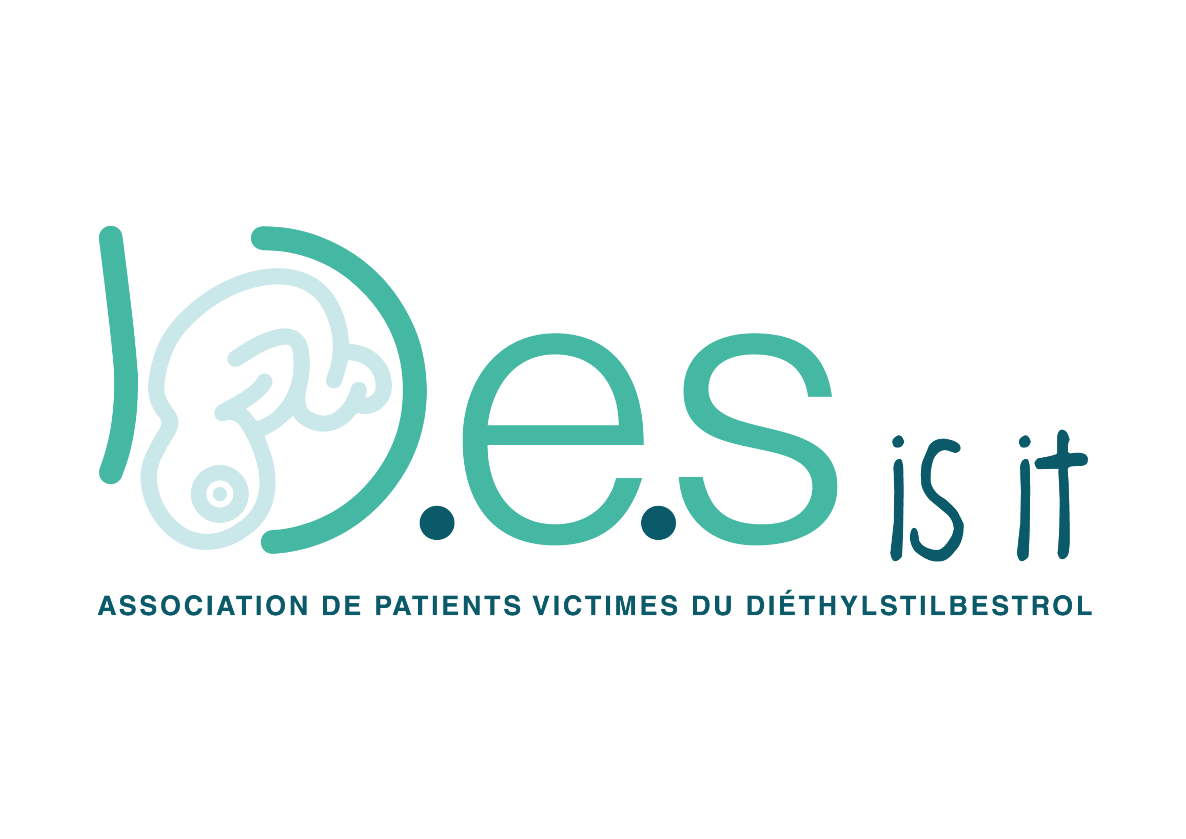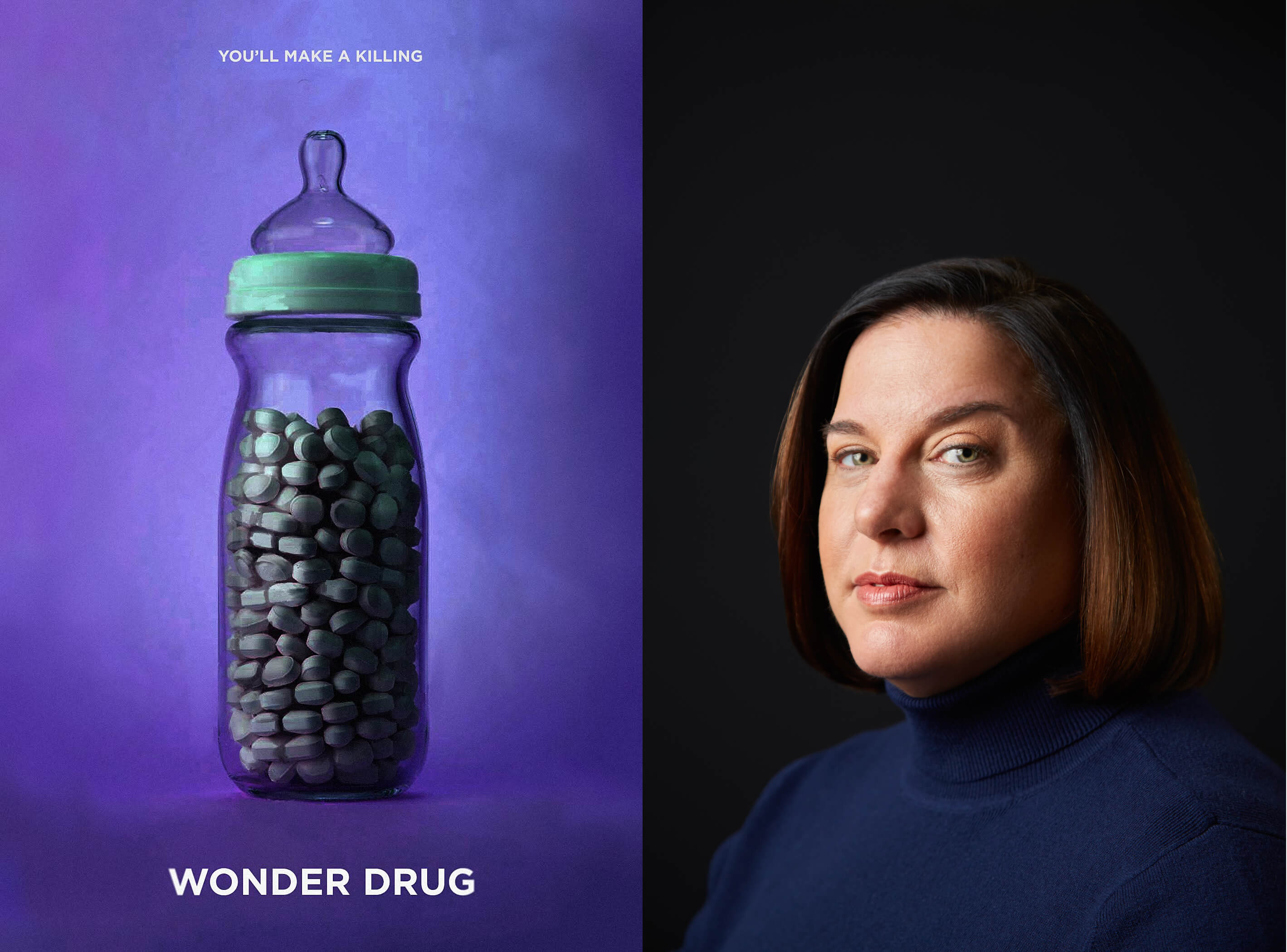
No one comes out of this "Wonder Drug" unscathed – Interview with screenwriter Caitlin McCarthy
Diethylstilbestrol (DES) is a synthetic estrogen marketed in the 1950s by many laboratories (UCB Pharma, Borne, Eli Lilly, etc.) under different brand names (Distilbene®, Stilboestrol- Borne®, etc.).
This drug, seen as a "wonder drug", has been prescribed to pregnant women to prevent miscarriages and premature births.
In addition to being completely ineffective, it was shown toxic to both "DES mothers", children exposed in utero and their offspring.
Following a first epidemiological study published by A.L Herbst, an American professor, the FDA issued an alert about its use during pregnancy in 19711. Indeed, this study revealed an increased incidence of vaginal cancer, a very rare cancer, called clear cell adenocarcinoma (CCA), in DES Daughters (exposed in utero).
In France, although the French government was informed, diethylstilbestrol continues to be prescribed until 1977.
This "Wonder Drug", since known for the amazing "special" effects that it has caused on at least three generations of victims, and often presented as an "dead subject", is back in the spotlight ; because this drug has indeed "made a hit", because the studies prove it: DES has not said its last word, and because DES activists - with whom D.E.S is it associates itself, are doing everything possible to ensure that the victims are not the forgotten of this tragedy.
This is why our association D.E.S is it is happy to give the floor to Caitlin McCarthy who, with her atypical background, her creativity and her commitment, invites all of us, beyond being actors of our own lives, to become actors of change.
WONDER DRUG: Interview with screenwriter Caitlin McCarthy
Caitlin McCarthy lives in Worcester, near Boston, USA. She is a DES Daughter and an activist.
She is a multi-award winning screenwriter, and she is now telling us about her screenplay "WONDER DRUG", produced by Rhino Films and Stephen Nemeth, which is currently expected to film later this year.
The movie will be available in France and subtitled.
D.E.S is it: You discovered late, in 2005, at the age of 35, that you were exposed in utero to DES. Your mother did not know that she got DES while she was pregnant because she had been told that she was taking prenatal vitamins. How then did you find out that you were a victim of DES? What allowed you to make the connection?
Caitlin McCarthy: I’m a DES Daughter who was born at the tail end of the tragedy in the U.S. My mother had been prescribed a prenatal vitamin that, unbeknownst to her, contained DES.
I didn’t discover my in utero DES exposure until a doctor made the connection during a colposcopy. Within seconds of starting the procedure, my doctor asked me, “What year were you born?” From his tone, I knew there was something of concern. I then learned, for the first time, that I had one of the telltale physical signs of DES exposure: a cockscomb or “hooded” cervix.
My doctor went on to ask if my mother had experienced any issues while pregnant with me. I didn’t know the answer, but my mom happened to be down in the hall in the waiting area, so the doctor was able to speak with her directly. My mom shared that she had, in fact, experienced bleeding during the early months of pregnancy, at which time her doctor prescribed a prenatal vitamin to address it. Bingo!
What’s scary is that I’m not alone. Around the world, there are thousands – maybe even millions – of people walking around today, totally unaware that they, too, were exposed to DES in utero. All of these people are not receiving proper medical treatment, or making truly informed decisions about their healthcare, as a result.
To hear more about my DES discovery, check out this episode of Chronicle (WCVB-TV Boston’s award-winning newsmagazine): www.youtube.com/watch?feature=emb_title&v=H_qno-icx6w
You experience some of the side effects of DES, what are they?
Unfortunately, there isn’t a “test” to determine DES exposure.
I’m aware of my reproductive tract structural differences. I also have to stay on top of my DES-related precancerous cell activity with annual GYN visits. Additionally, I undergo annual mammograms, as DES Daughters are at an increased risk of breast cancer.
You met Sir Ralph Dodds, the son of Charles Dodds – one of the creators of DES. Was this meeting important to you? As a DES victim, did you have any particular expectations? Can you tell us about this meeting?
When I first started researching my screenplay WONDER DRUG, I contacted the Worshipful Society of Apothecaries of London to learn more about Sir Charles Dodds, the creator of DES. The Society offered to connect me with a special person who could answer my questions… and then I received an email from Sir Ralph Dodds, son of Sir Charles Dodds.
Much to my delight and amazement, Sir Ralph immediately signed on as script consultant. He agreed to share his father’s life story with me, and insisted that I call him Ralph (no title).
Many people don’t realize that Sir Charles Dodds never intended DES for use during pregnancy. But once a formula is released, scientists can’t control its real-life applications. (Sir Charles created DES in 1938 while working with a grant that covered the cost of research, but prevented his discovery from being patented.)
I’m so honored that Ralph trusted me to set the record straight about his father. When I flew over to London to interview Ralph in person, both he and his wife Lady Marion (or Marion, as she insisted) entertained me in their residence which had once belonged to Sir Charles. Ralph and I spent time reviewing photos, letters, and other documents about Sir Charles’ experiences in developing DES. It was a lovely day.
While writing about Sir Charles in WONDER DRUG, I gave him many of Ralph’s qualities: his warmth, intelligence, wit, and overall decency as a human being.
Ralph passed away in 2015, and Marion followed in 2018. I miss them both tremendously.
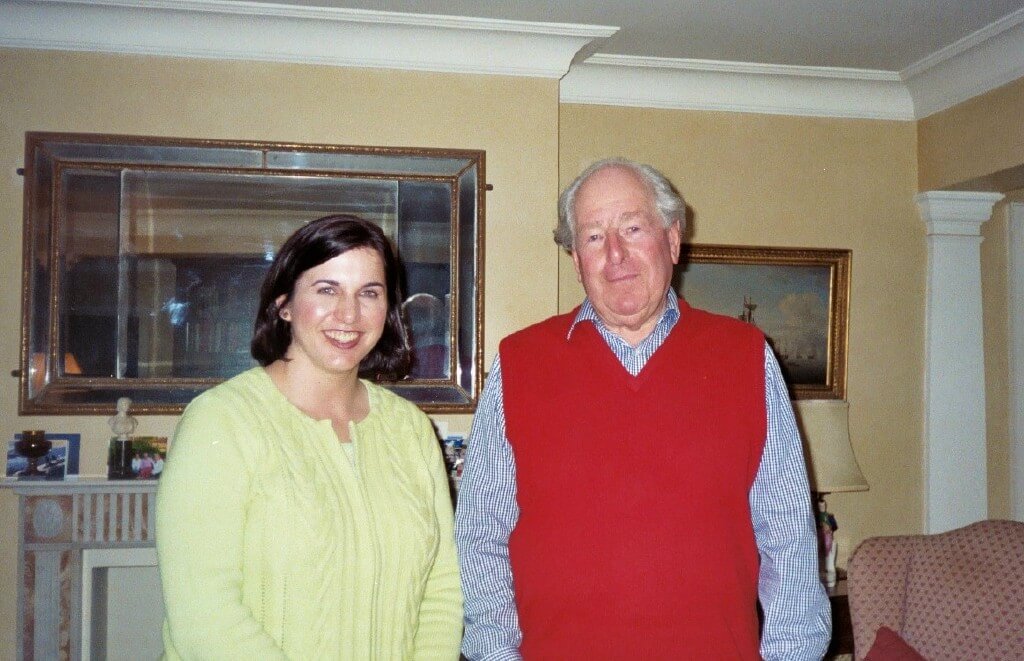
Caitlin McCarthy with Sir Ralph Dodds, son of Sir Charles Dodds.
Photo taken inside Sir Charles Dodds' London residence (inherited by his son).
The title of your screenplay is "Wonder Drug" (“médicament miracle”, in french), with the following subtitle "You'll make a killing" (“Vous allez faire un malheur !”, or “Ça va être une tuerie !“, in french). Beyond cynicism, which feelings haunt you?
I feel an enormous responsibility to do right by DES Mothers, Daughters, Sons, Third Generation, and the Transgender Community. DES isn’t a “dead subject.” It’s very much alive in people like me and millions of others who were criminally exposed to the toxic, carcinogenic drug.
As a screenwriter, I’m always driven to entertain, educate, and enlighten audiences. By making WONDER DRUG a compelling story, I have an opportunity to open the world’s eyes about the DES drug disaster.
Did the writing of this screenplay, the press coverage, the acknowledgment, the nominations you received for your activism, “set you free”?
By researching and creating WONDER DRUG, I have taken ownership over what happened to me. And I hope the produced feature film empowers other DES victims who feel overlooked and dismissed by the medical community, the government, society at large, and even certain friends and family members. The story of DES must be told.
You have received a lot of coverage in the press, how do you explain it, has DES become a less taboo subject?
I think two things are happening.
The press is finally starting to acknowledge how Big Pharma has a history of knowingly and criminally selling dangerous drugs to the public for decades.
Also, DES victims are “canaries in the coalmine” when it comes to synthetic estrogen. The reproductive abnormalities, cancers, and infertility we deal with daily show what could happen to the human race if we don’t employ the precautionary principle. It suggests we act to protect public health when there is credible evidence of harm, rather than wait for absolute proof.
What we do now clearly has an impact on future generations. We’ve got to be paying attention to this – and watching what happens to those of us exposed to DES gives a good indication of the future if left unchecked.
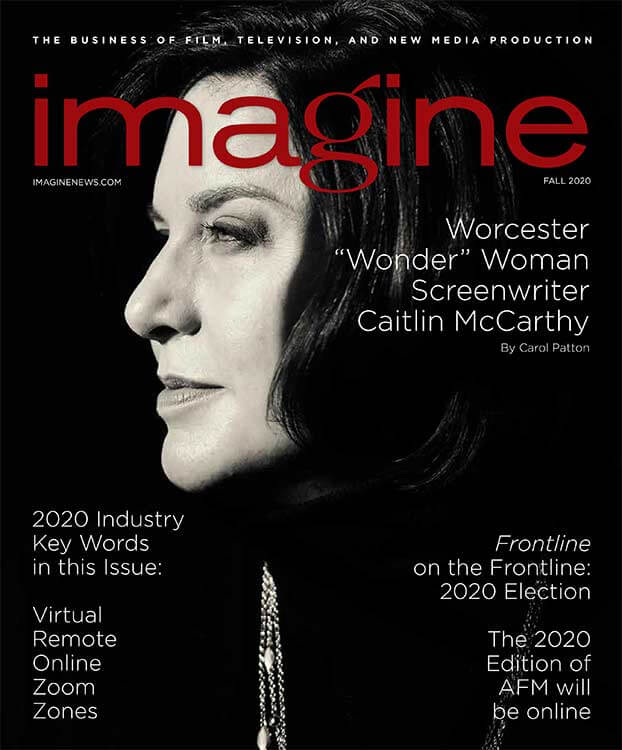
Thanks to the campaign that you led in collaboration with the offices of former U.S. Senators John Kerry and Scott Brown to obtain an apology from the FDA (Food and Drug Administration), the FDA finally acknowledged DES as a "tragedy" on February 22, 2011, but did not apologize. Do you think this is enough? As a victim, do you expect anything else?
The FDA must acknowledge its role in the DES drug disaster and formally apologize for it.
Several DES activists and I brainstormed a list of what Big Pharma must do. It’s not a definitive list, but it’s a start.
LIST OF WHAT BIG PHARMA MUST DO FOR DES VICTIMS:
- Formally apologize and accept responsibility for the DES drug disaster.
- Conduct an ongoing public campaign for all nations affected by DES exposure in an effort to reach out to women and men exposed to DES, so they can be proactive in advocating for their future health. The public campaign should also extend into the DES Third Generation (DES Grandchildren) and the Transgender Community.
- Similar to the book Eli Lilly published years ago to educate physicians on the “benefits” of prescribing DES to their patients, the Company now needs to publish a book to educate physicians, nurses, and all healthcare providers (including those in Residency programs in all affected nations) on the side effects associated with being exposed to DES in order to properly care for their DES exposed patients (women and men).
- Work with the National Cancer Institute (NCI) on updating its 1981 publication about DES, and help distribute the updated NCI publication with the Department of Health and Human Services, U.S. Public Health Service, the National Institutes of Health (NIH), and equivalent institutions in affected nations outside USA.
- Contribute annually, in perpetuity, to a superfund that covers all medical and related expenses stemming from the DES exposure of affected parties. A committee made up of leading DES researchers, DES victims, and doctors experienced in treating DES patients shall create categories of DES-related injuries, including loss of consortium to which dollar amounts will be ascribed.
- Fund research into issues surrounding DES Daughters, Sons, Grandchildren (Third Generation), and the Transgender Community.
- Acknowledge that prenatal exposure to DES interfered with the process of sexual development for numerous DES victims, such as transgenderism, hypogonadism in men, and PCOS in women.
- Work with the National Quality Forum and equivalent institutions in other affected nations to develop quality metrics on DES healthcare screening, sequela, and outcomes.
- Work with the World Health Organization, all healthcare entities, and relevant government health screening programs to eliminate the use of DES in humans and animals.
- Work with all healthcare entities to include a history of DES exposure on all intake assessment forms.
- Establish a DES Biobank that will monitor and track the genomic effects of DES.
- Obtain official data estimates of the extent of DES exposure and the establishment of DES Cancer Registries in those affected nations without these facilities.
This success did not happen overnight, can you tell us about the hard work you did and the problems you may have faced? As a woman, do you think you have encountered more difficulties?
I am not a morning person at all, but I get up at 3:00 am during the work week to write before my “day job” in public education starts at 7:10 am.
This commitment to my writing is an act of defiance. A woman hasn’t won an Academy Award for screenwriting in over a decade; and women represented only 12% of writers in the top 100 grossing films of 2020 (falling by 8 percentage points from the previous year). If I want to see change, then I must be the change. I must do the work. I must support other women in the industry, especially women of color who face higher levels of discrimination than white women. I must support male allies in the industry who recognize the discrimination and are fighting to bring it to an end. I truly believe work conquers all. And as the saying goes, nothing works unless you do.
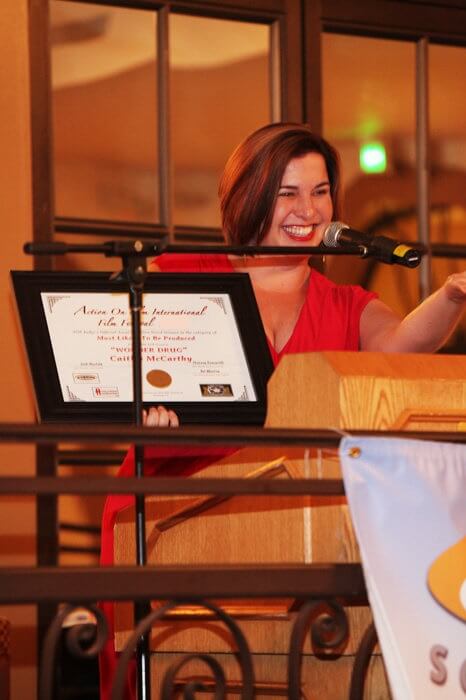
at the Action on Film International Film Festival's Writers' Awards ceremony.
You are from Worcester; did you receive any special support from your community? Do you have a message for those who live in small towns and have big plans?
I have received tremendous support from my community in Massachusetts (TV, print, and websites). Both the Worcester City Council and Worcester School Committee have publicly honored my screenwriting achievements with resolutions. I’ve even been honored twice as a “Red Sox Most Valuable Educator” for my teaching, screenwriting, and DES activism on the field at historic Fenway Park in Boston during pre-game ceremonies.
My advice to those in small towns with big dreams: it’s possible. As Audrey Hepburn once said, “Nothing is impossible. The word itself says, ‘I'm possible.’”
When and where the shooting of your film will take place?
Because of the pandemic, the situation is fluid – but WONDER DRUG is in the works with Rhino Films and producer Stephen Nemeth. We’re eyeing a possible shoot in Worcester, Massachusetts (my hometown) this year. Worcester’s nickname is “The Woo.” It’s now earned the label “HollyWoo,” thanks to all of the films and TV series being shot here. I am literally in the right place at the right time.
Does the COVID-19 pandemic, which is still raging all over the world, affect the smooth running of the shooting?
Best practices will be followed to provide a safe workplace and protect against the spread of COVID-19. Every individual involved with WONDER DRUG is committed to maintaining a sanitized and healthy work environment.
Your film is not a documentary, but a fiction. However, it is based on real facts: the DES tragedy. DES, as an endocrine disruptor, has affected – and still affects, millions of people around the world, over several generations. How did you deal with the complexity of the problem?
In a word: research!
My journey started in London, England, where I met with Sir Ralph Dodds, son of DES creator Sir Charles Dodds. While in London, I also conducted research at The Royal Society and The Worshipful Society of Apothecaries of London.
I left London with a carry-on bag full of photocopies. But my research was far from over. I spent the next year emailing, calling, and interviewing DES researchers, historians, and activists. I even gained a scientific advisor, P. Harry Jellinck, who worked directly under Sir Charles Dodds as a graduate student for a Ph.D. in the 1950s. (Harry passed away in 2019. I miss him terribly, but I’m so happy that I was able to connect him with Ralph. The two had a chance to reminisce in person about Sir Charles Dodds.)
I conducted all of this research while working full-time in an urban public high school. If you want something done, ask a busy person!
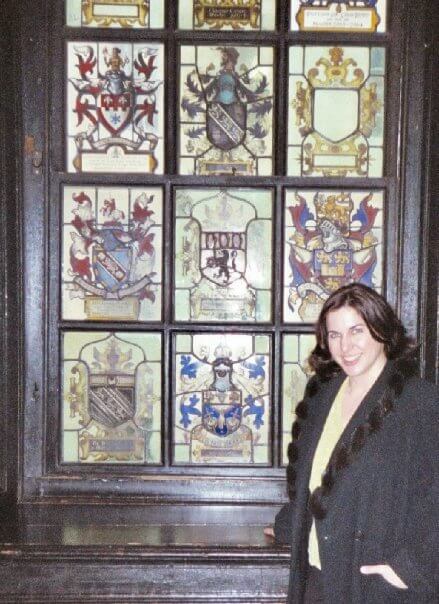

What message(s) do you want to convey to the audience through this movie? How did you select the scenes of your script that were read several times on stage? What reactions did you get from the audience?
WONDER DRUG is as much about the evolving societal roles of women over generations as it is about DES. The script highlights historical issues of control of medicine by pharmaceutical corporations and their government collaborators. It also highlights the pre-feminism stature of women in society and forms a potent metaphor for the courage needed to live one’s truth and speak up in the face of institutional resistance, abuse, or neglect.
One of the goals with WONDER DRUG is to parallel how uninformed choices about women’s healthcare made a century ago (pre-feminism) could be as dangerous as the perhaps misinformed and “empowered” choices made today (post-feminism).
With intersecting storylines like THE HOURS, WONDER DRUG explores DES’s tumultuous rise and fall, as well as the generations of women and families whose lives it affected.
WONDER DRUG has had three live staged readings of select scenes: at the Hamptons International Film Festival starring Steve Guttenberg (THREE MEN AND A BABY) and Alysia Reiner (Netflix’s original series “Orange is the New Black”; SIDEWAYS); in Los Angeles starring Juliet Landau (Drusilla in “Buffy the Vampire Slayer”) and John Buffalo Mailer (WALL STREET 2: MONEY NEVER SLEEPS); and in New York starring Alysia Reiner with her husband David Alan Basche (TV Land’s “The Exes”).
The audience reaction has been overwhelming each time. While the readings didn’t include every scene from the screenplay, they zeroed in on the screenplay’s key moments so the audience could experience the essence of WONDER DRUG.
This will be your first screenplay to appear on the big screen. What are your other current and future projects?
Two of my feature screenplays, A NATIVE LAND (a crime thriller) and RESISTANCE (a World War II action thriller), have attracted industry attention.
The incredible Lynsey Murdoch (BBC Writersroom Scottish Voice 2020) and I also are collaborating on a new TV project set in New England and Scotland in the 1800s.
I’m always working on something.
To follow my activities, check out my blog and sign up for updates at www.caitlinmccarthy.com.
Social Media Links:
Website: www.wonderdrugthemovie.com
Twitter: @WonderDrugMovie
Facebook: @WonderDrugTheMovie
Photo Captions:
Interview cover photos:
a. “Featured Script” poster for WONDER DRUG designed by The Black List.
b. Headshot of Caitlin McCarthy.
References
1 Selected item from the FDA drug bulletin-november 1971: diethylstilbestrol contraindicated in pregnancy. Calif Med. 1972;116(2):85-86.

